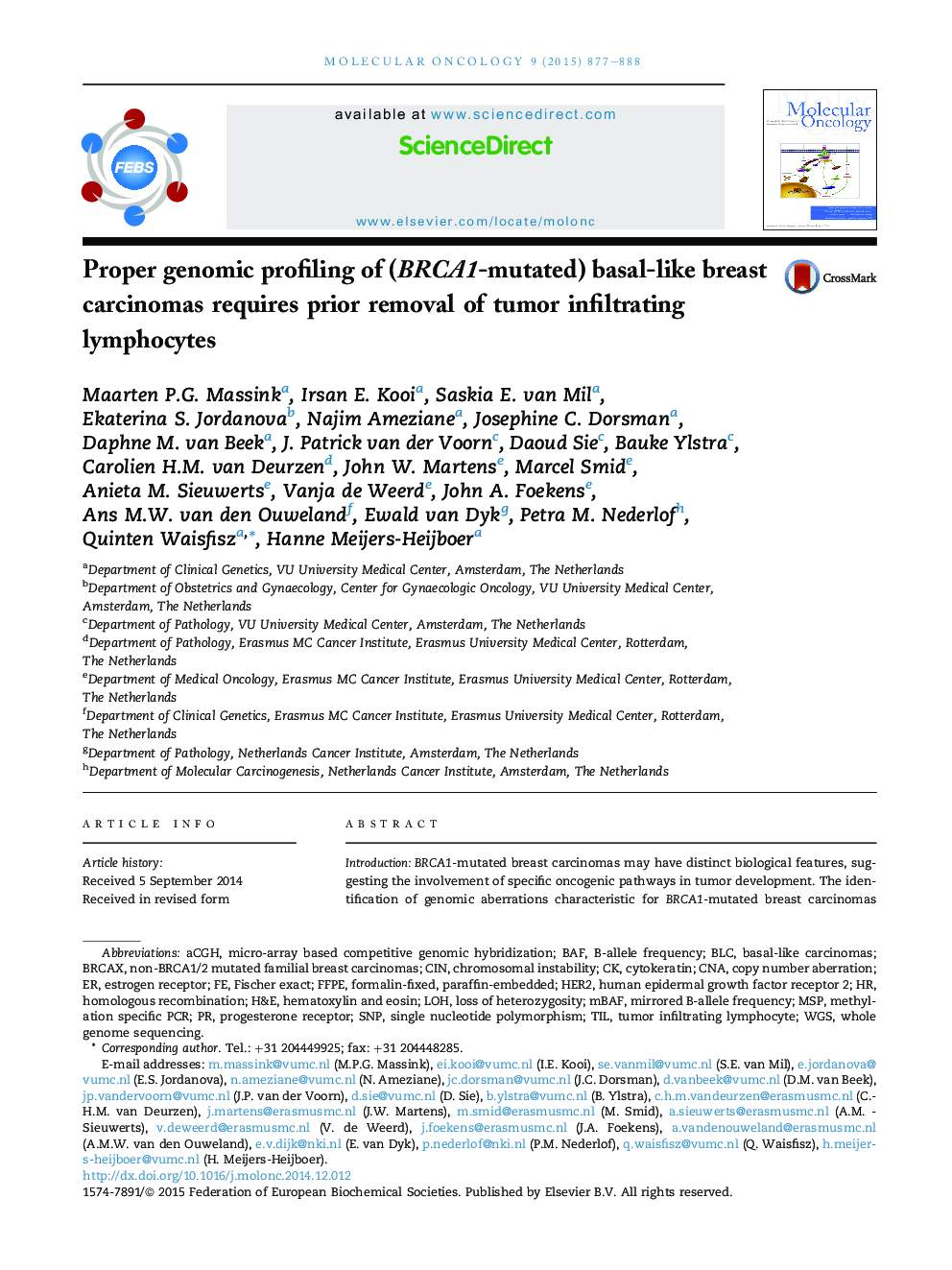| کد مقاله | کد نشریه | سال انتشار | مقاله انگلیسی | نسخه تمام متن |
|---|---|---|---|---|
| 2145557 | 1088796 | 2015 | 12 صفحه PDF | دانلود رایگان |

• Extreme amounts of tumor infiltrating lymphocytes are found in basal-like breast carcinomas.
• Tumor infiltrating lymphocytes severely impede proper genomic profiling of tumor material.
• FACS analysis can sort tumor infiltrating lymphocytes from tumor cells.
• Identification of characteristic copy number aberrations for BRCA1-mutated breast tumors.
• Genomic profiling on FACS sorted cells overcomes tumor infiltrating lymphocyte contamination.
IntroductionBRCA1-mutated breast carcinomas may have distinct biological features, suggesting the involvement of specific oncogenic pathways in tumor development. The identification of genomic aberrations characteristic for BRCA1-mutated breast carcinomas could lead to a better understanding of BRCA1-associated oncogenic events and could prove valuable in clinical testing for BRCA1-involvement in patients.MethodsFor this purpose, genomic and gene expression profiles of basal-like BRCA1-mutated breast tumors (n = 27) were compared with basal-like familial BRCAX (non-BRCA1/2/CHEK2*1100delC) tumors (n = 14) in a familial cohort of 120 breast carcinomas.ResultsGenome wide copy number profiles of the BRCA1-mutated breast carcinomas in our data appeared heterogeneous. Gene expression analyses identified varying amounts of tumor infiltrating lymphocytes (TILs) as a major cause for this heterogeneity. Indeed, selecting tumors with relative low amounts of TILs, resulted in the identification of three known but also five previously unrecognized BRCA1-associated copy number aberrations. Moreover, these aberrations occurred with high frequencies in the BRCA1-mutated tumor samples. Using these regions it was possible to discriminate BRCA1-mutated from BRCAX breast carcinomas, and they were validated in two independent cohorts. To further substantiate our findings, we used flow cytometry to isolate cancer cells from formalin-fixed, paraffin-embedded, BRCA1-mutated triple negative breast carcinomas with estimated TIL percentages of 40% and higher. Genomic profiles of sorted and unsorted fractions were compared by shallow whole genome sequencing and confirm our findings.ConclusionThis study shows that genomic profiling of in particular basal-like, and thus BRCA1-mutated, breast carcinomas is severely affected by the presence of high numbers of TILs. Previous reports on genomic profiling of BRCA1-mutated breast carcinomas have largely neglected this. Therefore, our findings have direct consequences on the interpretation of published genomic data. Also, these findings could prove valuable in light of currently used genomic tools for assessing BRCA1-involvement in breast cancer patients and pathogenicity assessment of BRCA1 variants of unknown significance. The BRCA1-associated genomic aberrations identified in this study provide possible leads to a better understanding of BRCA1-associated oncogenesis.
Journal: Molecular Oncology - Volume 9, Issue 4, April 2015, Pages 877–888